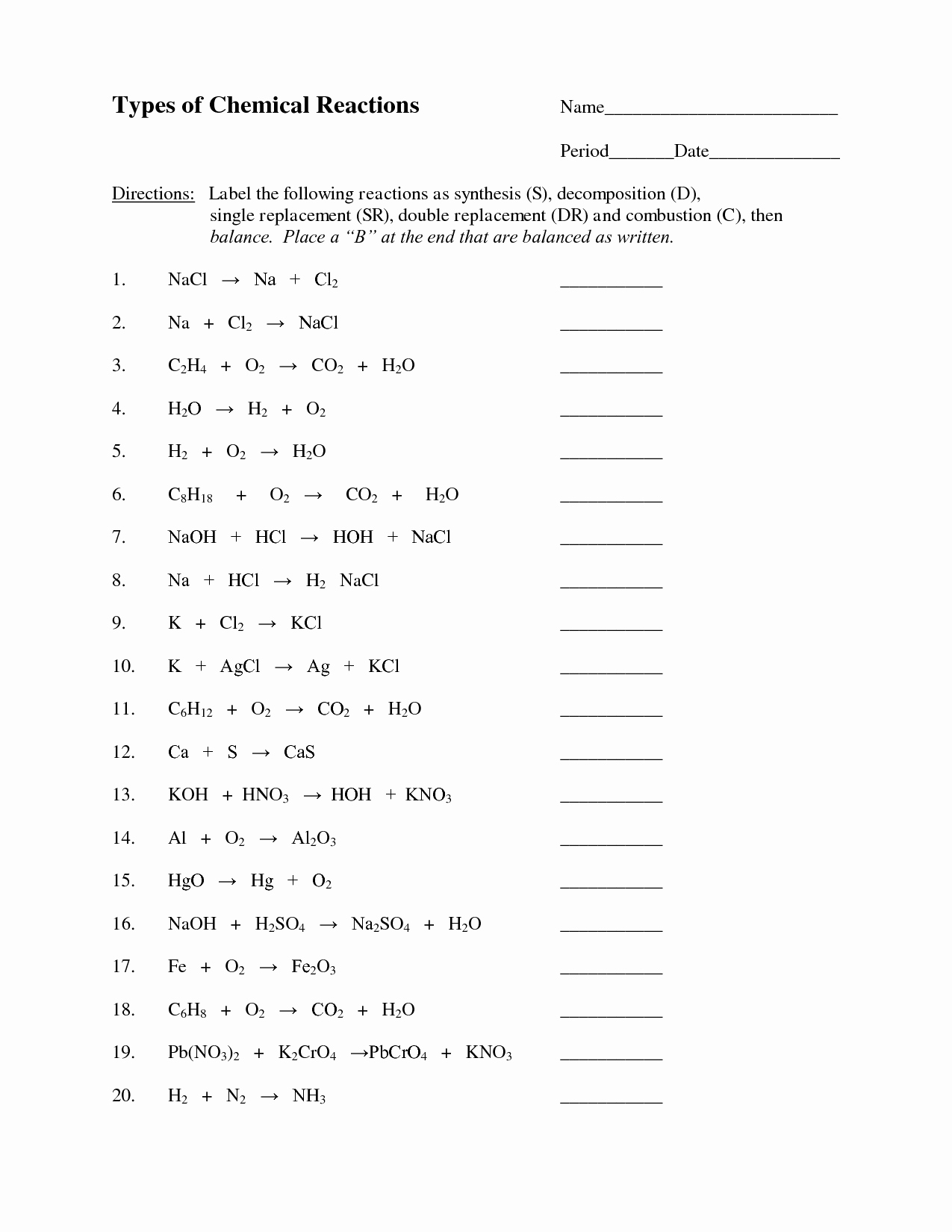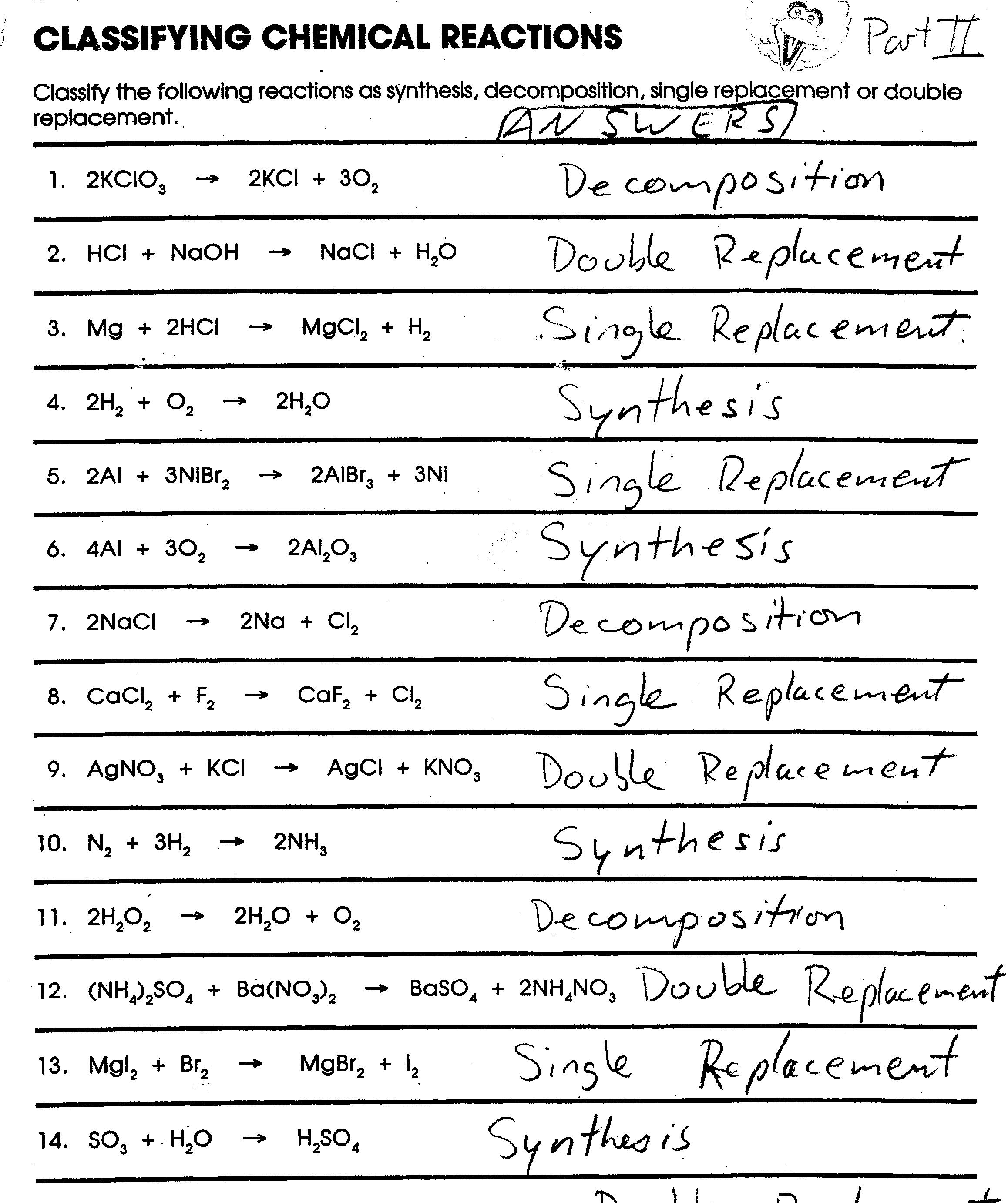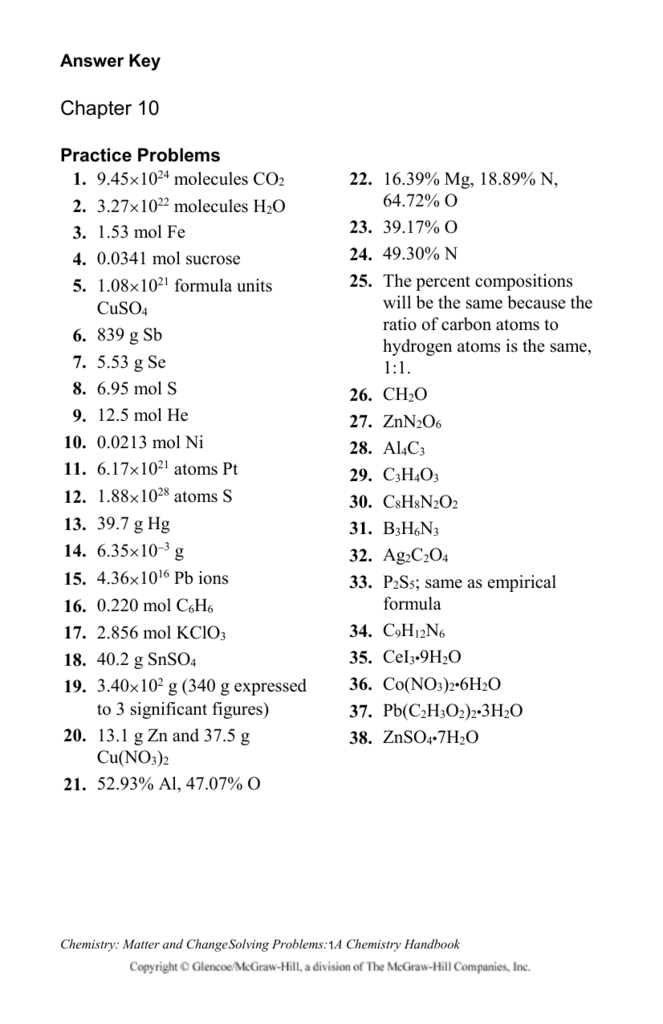Chapter 10 Chemical Reactions Answer Key
Chapter 10 Chemical Reactions Answer Key - A reaction in which a single compound breaks down to form two or more simpler substances. Web chemistry 120 chapter 10: Web a chemical reaction where a metal is eaten away by substances in the air or water. Chapter 15 principles of chemical reactivity: Our resource for chemistry and chemical reactivity includes answers. Chapter 12 the solid state ; A chemical reaction that involves the exchange of positive ions between two compounds and produces either a precipitate a gas, or water. One in which a single compound breaks down into two or more elements or new compounds; Liquids and solids are similar in that they are matter composed of atoms, ions, or molecules. Chapter 13 solutions and their behavior;
The rates of chemical reactions ; Web a chemical reaction in which oxygen combines with a substance and releases energy in the form of heat and light. Europium oxide is responsible for the red color in. What does chemical reactions mean? Chapter 11 intermolecular forces and liquids; Our resource for chemistry and chemical reactivity includes answers. Web chemistry 120 chapter 10: Chapter 12 the solid state ; Web a chemical reaction where a metal is eaten away by substances in the air or water. The substances which are combined and changed in the chemical reaction.
Quantity relationships in chemical reactions outline i. The compound eu 2 o 3 is neutral. Chapter 16 principles of chemical. Web a chemical reaction that occurs when a single compound breaks down into two or more elements or new compounds. Magnesium oxide forms when magnesium is exposed to oxygen gas. Chapter 12 the solid state ; Write a balanced chemical equation with state symbols for the following reactions i) solutions of barium. Web the empirical formula contains a positive charge of 2 (+3) = +6 and a negative charge of 3 (−2) = −6, for a net charge of 0. Europium oxide is responsible for the red color in. An ionic equation that includes only the particles that participate in the reaction.
Solved Name LESSON 1 Key Concept Builder Understanding
Web a chemical reaction that occurs when a single compound breaks down into two or more elements or new compounds. One in which a single compound breaks down into two or more elements or new compounds; Web this chapter will present a quantitative description of when the chemical composition of a system is not constant with time. An ionic equation.
[Grade 9 Physical Science Chemical Reactions] Balancing equations We
Chapter 11 intermolecular forces and liquids; Chemical kinetics is the study of reaction rates, the changes in the. Chapter 15 principles of chemical reactivity: Web 6,515 chemical reactions and equations 7,671 chemical equations due to the vast amounts of chemical reactions happening around us, a nomenclature was developed to simplify how we express a chemical reaction in the form of.
50 Chemical Reactions Worksheet Answers Chessmuseum Template Library
Chapter 12 the solid state ; Web the empirical formula contains a positive charge of 2 (+3) = +6 and a negative charge of 3 (−2) = −6, for a net charge of 0. They are incompressible and have similar densities that are both much larger than those of. Our resource for chemistry and chemical reactivity includes answers. Web this.
30 Chemical Reactions Worksheet Answers Education Template
Chapter 11 intermolecular forces and liquids; How do you convert meters to nanometers? One in which a single compound breaks down into two or more elements or new compounds; The compound eu 2 o 3 is neutral. Web identify the reactants and products in each chemical reaction.
Chemistry Balancing Chemical Equations Worksheet Answer Key Class 10
A reaction in which a single compound breaks down to form two or more simpler substances. Web 6,515 chemical reactions and equations 7,671 chemical equations due to the vast amounts of chemical reactions happening around us, a nomenclature was developed to simplify how we express a chemical reaction in the form of a chemical. What does chemical reactions mean? Europium.
14 Chemical Reactions Worksheet /
The chemical formula of carbon tetrachloride tells us that this compound contains _______carbon atom (s) and. One in which a single compound breaks down into two or more elements or new compounds; Europium oxide is responsible for the red color in. A chemical reaction that occurs when the atoms of one element replace the atoms of another element in a.
50 Chemical Reactions Worksheet Answers Chessmuseum Template Library
Europium oxide is responsible for the red color in. The rates of chemical reactions ; They are incompressible and have similar densities that are both much larger than those of. Web the empirical formula contains a positive charge of 2 (+3) = +6 and a negative charge of 3 (−2) = −6, for a net charge of 0. Web identify.
Chemical Reactions And Equations Worksheet Mcgraw Hill Tessshebaylo
Web a chemical reaction that occurs when a single compound breaks down into two or more elements or new compounds. The chemical formula of carbon tetrachloride tells us that this compound contains _______carbon atom (s) and. Web this chapter will present a quantitative description of when the chemical composition of a system is not constant with time. Web chapter 10.
PPT Chapter 10 Chemical Reactions PowerPoint Presentation, free
They are incompressible and have similar densities that are both much larger than those of. A chemical reaction that involves the exchange of positive ions between two compounds and produces either a precipitate a gas, or water. The compound eu 2 o 3 is neutral. A chemical reaction that occurs when the atoms of one element replace the atoms of.
Pogil Types Of Chemical Reactions Answer Key Colby Messih Chemistry
What can cause elevated uric acid? Chapter 12 the solid state ; Web chemistry 120 chapter 10: A chemical reaction that involves the exchange of positive ions between two compounds and produces either a precipitate a gas, or water. Chapter 16 principles of chemical.
Web A Chemical Reaction That Occurs When A Single Compound Breaks Down Into Two Or More Elements Or New Compounds.
One in which a single compound breaks down into two or more elements or new compounds; The substances which are combined and changed in the chemical reaction. In photosynthesis, carbon dioxide and water react to form glucose and oxygen. Web this chapter will present a quantitative description of when the chemical composition of a system is not constant with time.
Chapter 12 The Solid State ;
Web chapter 10 gases and their properties; Chapter 11 intermolecular forces and liquids; Write a balanced chemical equation with state symbols for the following reactions i) solutions of barium. Chapter 15 principles of chemical reactivity:
An Ionic Equation That Includes Only The Particles That Participate In The Reaction.
A reaction in which a single compound breaks down to form two or more simpler substances. The chemical formula of carbon tetrachloride tells us that this compound contains _______carbon atom (s) and. Write grammatically correct sentences that completely describe the chemical reactions. I) h 2 + cl 2 → 2hcl ii) 3bacl 2 + al 2 (so 4) 3 →3baso 4 + 2alcl 3 iii) 2na + 2h 2 o → 2naoh + h 2 3.
Chapter 13 Solutions And Their Behavior;
Quantity relationships in chemical reactions outline i. Web chemistry 120 chapter 10: They are incompressible and have similar densities that are both much larger than those of. Web terms in this set (42) is bubbling evidence of chemical change?

![[Grade 9 Physical Science Chemical Reactions] Balancing equations We](https://preview.redd.it/1op381316u241.jpg?auto=webp&s=e364d51b6221eee8042d6211108a10741d7e2abd)







